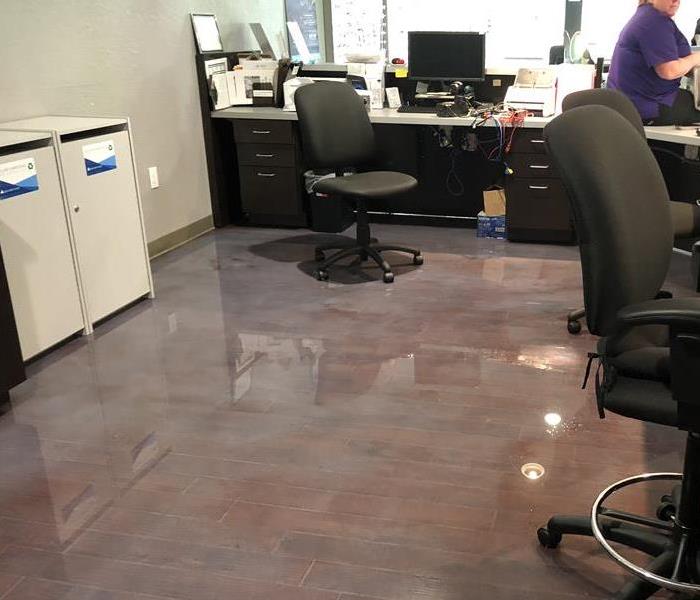Navigating Water Damage After a Southeastern Storm
5/15/2024 (Permalink)
 Dealing with water damage after a storm can be challenging, but with the right approach, you can effectively restore your property.
Dealing with water damage after a storm can be challenging, but with the right approach, you can effectively restore your property.
Water damage is a common aftermath of storms in Florida, where heavy rainfall and flooding are frequent occurrences. Dealing with water damage can be overwhelming, but understanding the necessary steps can help homeowners navigate the process effectively. Here's a comprehensive guide to dealing with water damage after a storm:
1. Safety First
Before attempting any cleanup or restoration efforts, prioritize safety. Turn off the power supply to affected areas if it's safe to do so, and avoid contact with standing water, as it may contain harmful contaminants or pose electrical hazards. Wear protective gear, such as gloves and boots, to minimize exposure to potential hazards.
2. Assess the Damage
Once it's safe to do so, assess the extent of the water damage in your home. Check for visible signs of water intrusion, such as soaked carpets, water stains on walls or ceilings, and warped or damaged flooring. Take photos or videos of the damage for insurance purposes and documentation.
3. Remove Standing Water
Promptly remove any standing water from your home to prevent further damage and mold growth. Use a wet/dry vacuum, mops, or towels to soak up excess water. If the water level is too high or if there's significant flooding, consider seeking professional assistance from water damage restoration experts like SERVPRO®.
4. Dry Out the Affected Areas
Thoroughly dry out the affected areas using fans, dehumidifiers, and natural ventilation. Open windows and doors to promote air circulation, and use fans to expedite the drying process. Pay special attention to hidden or hard-to-reach areas, such as behind walls or under flooring, as moisture trapped in these areas can lead to mold growth and structural damage.
5. Clean and Disinfect
After removing standing water and drying out the affected areas, thoroughly clean and disinfect all surfaces to prevent mold and bacteria growth. Use a mild detergent or disinfectant solution to clean walls, floors, and other surfaces that came into contact with floodwater. Pay attention to furniture, appliances, and personal belongings that may also require cleaning and disinfection.
6. Monitor for Mold
Keep a close eye on your home for any signs of mold growth in the days and weeks following the water damage. Mold thrives in damp, humid environments, so it's essential to maintain proper ventilation and humidity levels to prevent mold from taking hold. If you notice any signs of mold growth, such as musty odors or visible mold growth, contact a professional mold remediation specialist like SERVPRO for assistance.
7. Work with Your Insurance Company
Finally, contact your insurance company to file a claim for the water damage and begin the claims process. Provide them with documentation of the damage, including photos, videos, and receipts for any repairs or restoration work. Work closely with your insurance adjuster and restoration professionals to ensure that your home is restored to its pre-damage condition.
Dealing with water damage after a storm can be challenging, but with the right approach and assistance, homeowners can effectively restore their homes and minimize further damage. By following these steps and working with experienced professionals like SERVPRO of NE Hillsborough/Plant City, homeowners can navigate the process of water damage restoration with confidence and peace of mind.



 24/7 Emergency Service
24/7 Emergency Service